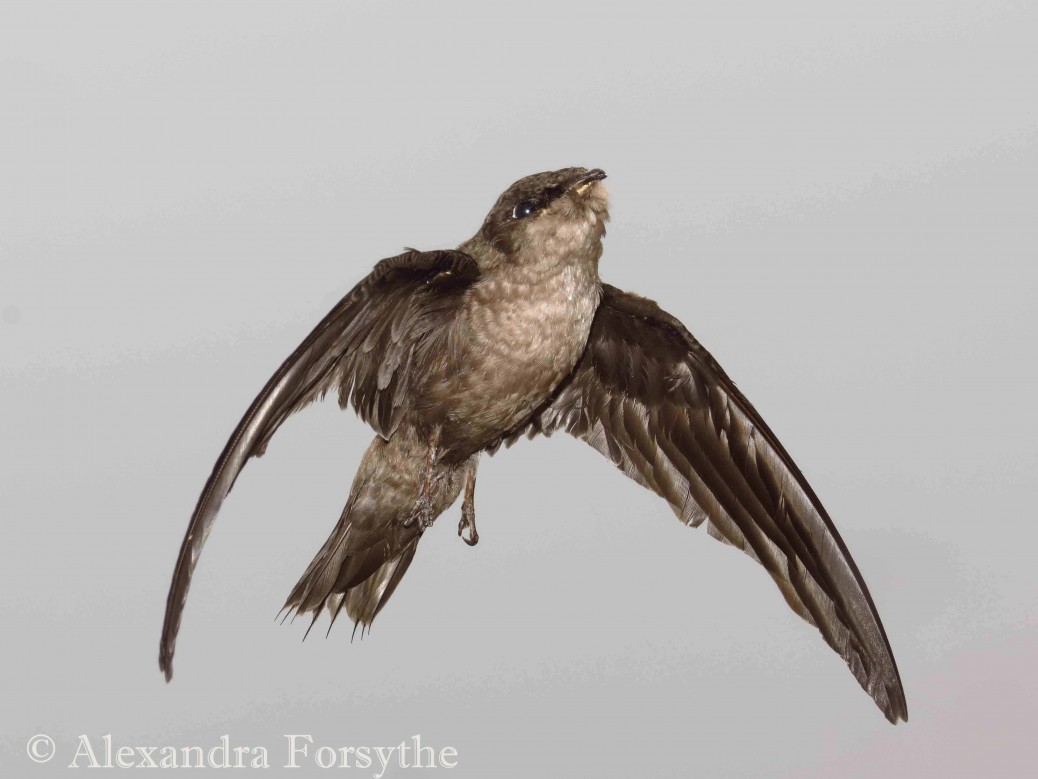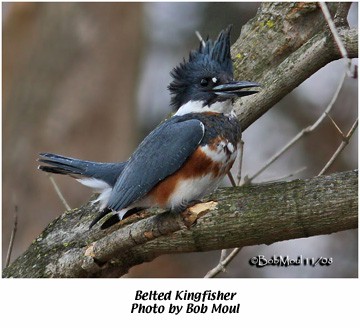by Alexandra Forsythe
Looking for a home blessing? Try this one: “Grant to this chimney a swallow.” If you have Chimney Swifts in your chimney, you are indeed blessed!
These talented acrobats consume a tremendous number of mosquitoes, flies, flying ants and termites daily. Each Swift will eat a third of its body weight in these harmful insects each day; five nestlings can eat 12,000 insects per day!
Chimney Swifts are often called “flying cigars” due to their appearance. They are almost 5” long, almost black, and have lighter, brownish-gray throats. Each of their scythe-shaped wings is the length of their entire body but appear very thin when they are roosting.
Swifts are in the Apodidae family which means “without feet”. They eat and drink while in flight, never on the ground. They even bathe in flight! They glide down to the water, smack the surface with their body, then bounce up and shake the water off as they fly away. They fly almost constantly except when roosting overnight and nesting. They never sit on a perch like other birds; their long claws and specially designed feet are adapted for clinging to vertical surfaces, not for perching. The claws on their feet act like grappling hooks. The tail is also designed for clinging to vertical surfaces. The tail feather shafts extend as stiff, exposed spines to support the birds as they roost. Its genus name Chaetura comes from the Greek word “chaite”, meaning spine, and “oura”, meaning tail.
Breeding season runs from May to July. The 4” wide half-cup nest is constructed and attached to the wall of the chimney using a mixture of woven twigs and very sticky saliva from a gland under the bird’s tongue. The twigs are broken off and collected while the birds are in flight. The nest can take up to a month to construct. The nestlings are fed by both parents, and other unmated birds often help raise the young. Two to three weeks after hatching, the young outgrow the nest and must cling to the wall. They can fly 30 days from hatching and can live up to 14 years in the wild.
Sadly, the Chimney Swift population has declined 65% since 1966. In nature, they roost in large, hollow trees, but there are very few such trees left. As a result, the Swifts adapted to live in masonry chimneys, but people started to cap their chimneys and use metal flues and inserts, preventing the Swifts from roosting. Be sure to use Swift-friendly chimney caps or build and install a Chimney Swift Tower.
Shortly before migrating south for the winter, they will collect in large groups, sometimes numbering in the hundreds or thousands, circling for an hour or so before sunset. Chief Pokagon of the Potawatomi Indians wrote poetically about the Chimney Swifts and their whirling flight before they roost for the night: “Their twittering notes and whizzing wings create a musical, but wild, continued roar…The twittering, whizzing roar continues to increase; the revolving circle fast assumes a funnel shape, moving downward until the point reaches the hollow in the stub, pouring its living mass therein until the last bird dropped out of sight.”
Every neighborhood should be graced with the presence of these beautiful, acrobatic birds. Every child should have the chance to watch their spectacular flight patterns. Be sure to attend the Chimney Swift Program at Limberlost on August 9, 2014 (http://limberlost.weebly.com/) to learn more about the Swifts, engage in fun activities, and watch the Swifts as they entertain you in the skies above!











